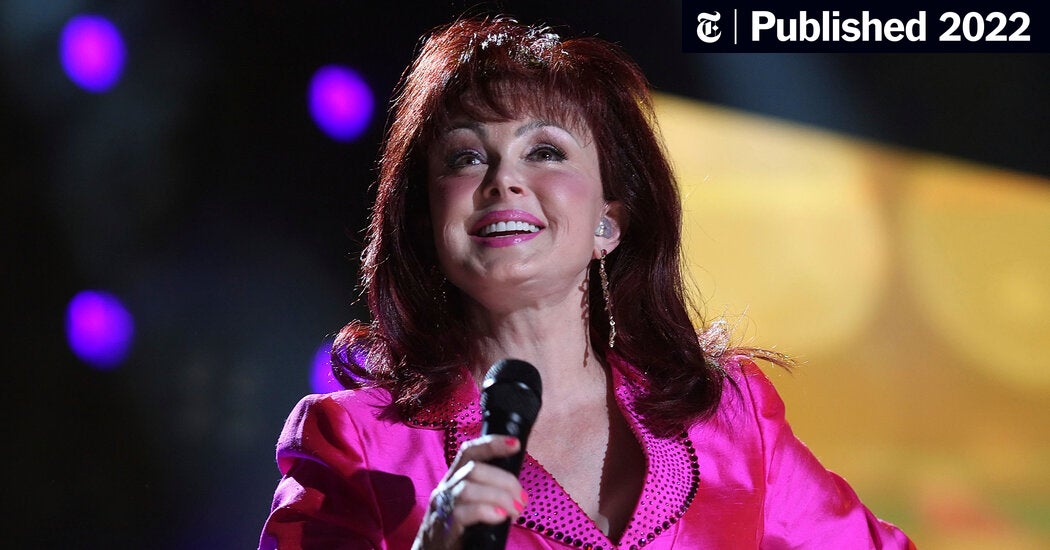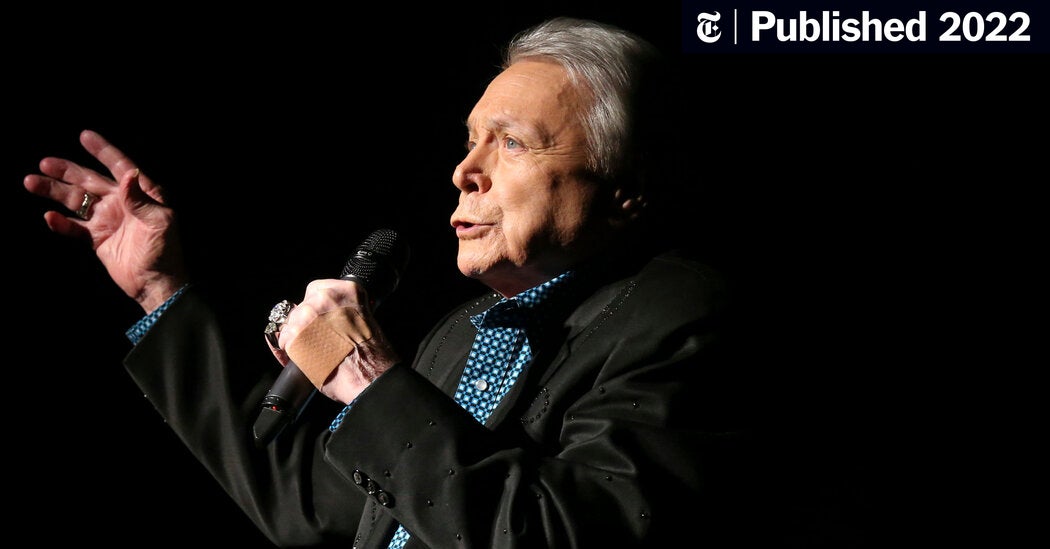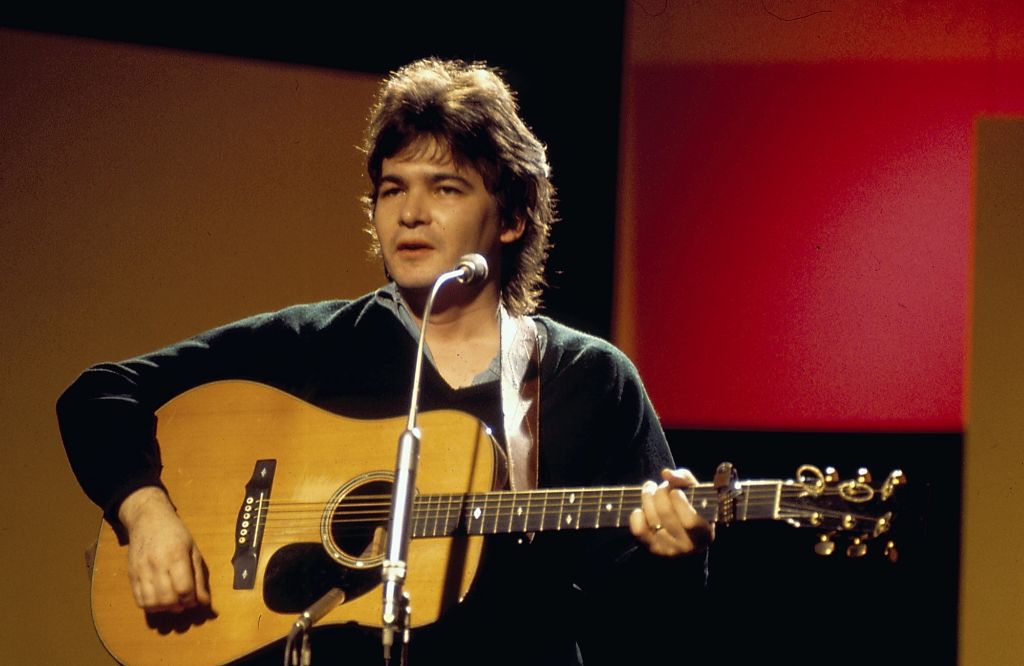As seen yesterday, the epochal "Circle" album became a million-seller and recognised from both the country and
rock music press for its historical significance - which has grown over the years and particularly in the last few years.
The band had, by 1972, eclipsed the competition (e.g. the Byrds) as a "crossover" act, reaching country and bluegrass audiences even as their folk/rock listeners acquired a new appreciation for pioneer country musicians such as Roy Acuff and "Mother" Maybelle Carter. The NGDB succeeded with the "Circle" because they were willing to meet traditional country and bluegrass music on their terms and being respectful to the music veterans, rather than behave as
arrogant, blow-in smart-arse rock musicians ... but also showing their instrumental abilities.
During the year and a half that followed the success of the "Circle", Les Thompson left the group, reducing the NGDB
to a quartet. Their next album, Stars & Stripes Forever, issued in 1974, was a peculiar live album, mixing concert performances, including past hits Buy for Me the Rain' and 'Mr. Bojangles' with "Circle" collaborations (fiddler Vassar Clements - another veteran whose career had been revived to a new younger audience thanks to the "Circle" - was a guest performer) and dialogue. From the album, the 'Battle Of New Orleans', penned by Jimmy Driftwood (whose version is also worth a listen), was a huge # 1 single in 1959 for Johnny Horton (see post # 308). The NGDB also recorded a funky version of the song for their 1975 studio "Symphonion Dream" album, but I much prefer the fun up-tempo live version from 1974 -
The next NGDB album, "Symphonion Dream", released in 1975, featured guest appearances by country rock greats,
Linda Rondstadt and Leon Russell. Actor Gary Busey also played some percussion instruments. Their first pure studio recording since the "Circle", "Dream" is another very different earful sort of diverse, psychedelic country/bluegrass (hence my description of "funky" for the 'Battle Of New Orleans' version on this album). This odd mixture made the pop charts, not the country charts. However, 'Hey Good Lookin' - yet another Hank Williams classic, after the 2 featured yesterday - was a killer duet with Linda Ronstadt that goes down as the best from the album. The accompiament provided by the NGDB, including a pedaless steel guitar, deliberately had a retro, early fifties sound, honouring the Hank Williams original. -
Another superb cover from the occasionally brilliant, if inconsistent, 1975 album "Symphonion Dream" (the NGDB was still hanging on to its west coast cool counter-culture imageso as to not lose their college student and hip urban market at this time), the ethereal 'All I Have To Do Is Dream' was made famous by the Everly Brothers (see post # 393) -
in 1976, Jim Ibbotson left the lineup and was replaced by John Cable on guitar and Jackie Clark on bass. The band shortened its name to "The Dirt Band" and the group's sound became more pop and country rock oriented. In 1977, they became the first American group to tour the USSR, playing 28 sold-out concerts and a televised appearance watched by an estimated 145 million people. They also appeared on the second season of the PBS music program Austin City Limits.
Saxophonist Al Garth, drummer Merel Bregante, and bassist Richard Hathaway were added to the lineup in 1978. By now, the group, with Jeff Hanna as producer, had became a much more mainstream pop/rock outfit with a smoother sound. From 1975 to 1982, the band mostly charted only in the pop, not country charts. Their records were far less eccentric, although they continued to be popular - but to a more mainstream market. 'An American Dream', penned by Rodney Crowell (clearly influenced by Jimmy Buffet's laid back Gulf-Country sound) is from the 1979 album of the same name. Featuring backing vocals from Linda Ronstadt, it reached # 13 in the pop charts but only # 58 on the country charts - ironically, by today's standards, it would absolutely be considered as a country song, not pop -
Keyboardist session player Bob Carpenter (who occasionally sat in with the band from 1975 on) contributed to their 1978 album "The Dirt Band" and joined the band permanently in 1980. By 1982, however, they were back to their country roots, renamed back to the Nitty Gritty Dirt Band, and Jim Ibbotson was playing with them again. "Let's Go", released in the middle of 1983, heralded their return to country music, as a largely acoustic band. This album not only re-established their country credibility, it heralded a long run of success in the country charts.
The NGDB released 'Dance Little Jean' in 1983, the second single from the "Let’s Go" album, reaching # 9, the bands very first top 10 hit on the country chart. Jimmy Ibbotson wrote this totally sentimental, feel good song, hoping the lyrics would repair his marriage (which it did ... temporarily). This live performance is from the iconic country music venue, Church Street Station in Orlando. Most good country songs have usually sad or outright tragic themes. This is the absolute opposite. Even from the catalogue of feelgood country songs, they don't come more sentimental and sweeter than this -
We leave off for now in 1983 with the NGDB having left behind its now dated "quirky" west coast counter-culture image
in 1977 and then a mainstream pop/country rock group from 1977 to 1982 (The Dirt Band era) to finally totally embrace country genre (not only musically, but culturally) from 1983. This led to their greatest run of commercial success - but that's for tomorrow.
rock music press for its historical significance - which has grown over the years and particularly in the last few years.
The band had, by 1972, eclipsed the competition (e.g. the Byrds) as a "crossover" act, reaching country and bluegrass audiences even as their folk/rock listeners acquired a new appreciation for pioneer country musicians such as Roy Acuff and "Mother" Maybelle Carter. The NGDB succeeded with the "Circle" because they were willing to meet traditional country and bluegrass music on their terms and being respectful to the music veterans, rather than behave as
arrogant, blow-in smart-arse rock musicians ... but also showing their instrumental abilities.
During the year and a half that followed the success of the "Circle", Les Thompson left the group, reducing the NGDB
to a quartet. Their next album, Stars & Stripes Forever, issued in 1974, was a peculiar live album, mixing concert performances, including past hits Buy for Me the Rain' and 'Mr. Bojangles' with "Circle" collaborations (fiddler Vassar Clements - another veteran whose career had been revived to a new younger audience thanks to the "Circle" - was a guest performer) and dialogue. From the album, the 'Battle Of New Orleans', penned by Jimmy Driftwood (whose version is also worth a listen), was a huge # 1 single in 1959 for Johnny Horton (see post # 308). The NGDB also recorded a funky version of the song for their 1975 studio "Symphonion Dream" album, but I much prefer the fun up-tempo live version from 1974 -
The next NGDB album, "Symphonion Dream", released in 1975, featured guest appearances by country rock greats,
Linda Rondstadt and Leon Russell. Actor Gary Busey also played some percussion instruments. Their first pure studio recording since the "Circle", "Dream" is another very different earful sort of diverse, psychedelic country/bluegrass (hence my description of "funky" for the 'Battle Of New Orleans' version on this album). This odd mixture made the pop charts, not the country charts. However, 'Hey Good Lookin' - yet another Hank Williams classic, after the 2 featured yesterday - was a killer duet with Linda Ronstadt that goes down as the best from the album. The accompiament provided by the NGDB, including a pedaless steel guitar, deliberately had a retro, early fifties sound, honouring the Hank Williams original. -
Another superb cover from the occasionally brilliant, if inconsistent, 1975 album "Symphonion Dream" (the NGDB was still hanging on to its west coast cool counter-culture imageso as to not lose their college student and hip urban market at this time), the ethereal 'All I Have To Do Is Dream' was made famous by the Everly Brothers (see post # 393) -
in 1976, Jim Ibbotson left the lineup and was replaced by John Cable on guitar and Jackie Clark on bass. The band shortened its name to "The Dirt Band" and the group's sound became more pop and country rock oriented. In 1977, they became the first American group to tour the USSR, playing 28 sold-out concerts and a televised appearance watched by an estimated 145 million people. They also appeared on the second season of the PBS music program Austin City Limits.
Saxophonist Al Garth, drummer Merel Bregante, and bassist Richard Hathaway were added to the lineup in 1978. By now, the group, with Jeff Hanna as producer, had became a much more mainstream pop/rock outfit with a smoother sound. From 1975 to 1982, the band mostly charted only in the pop, not country charts. Their records were far less eccentric, although they continued to be popular - but to a more mainstream market. 'An American Dream', penned by Rodney Crowell (clearly influenced by Jimmy Buffet's laid back Gulf-Country sound) is from the 1979 album of the same name. Featuring backing vocals from Linda Ronstadt, it reached # 13 in the pop charts but only # 58 on the country charts - ironically, by today's standards, it would absolutely be considered as a country song, not pop -
Keyboardist session player Bob Carpenter (who occasionally sat in with the band from 1975 on) contributed to their 1978 album "The Dirt Band" and joined the band permanently in 1980. By 1982, however, they were back to their country roots, renamed back to the Nitty Gritty Dirt Band, and Jim Ibbotson was playing with them again. "Let's Go", released in the middle of 1983, heralded their return to country music, as a largely acoustic band. This album not only re-established their country credibility, it heralded a long run of success in the country charts.
The NGDB released 'Dance Little Jean' in 1983, the second single from the "Let’s Go" album, reaching # 9, the bands very first top 10 hit on the country chart. Jimmy Ibbotson wrote this totally sentimental, feel good song, hoping the lyrics would repair his marriage (which it did ... temporarily). This live performance is from the iconic country music venue, Church Street Station in Orlando. Most good country songs have usually sad or outright tragic themes. This is the absolute opposite. Even from the catalogue of feelgood country songs, they don't come more sentimental and sweeter than this -
We leave off for now in 1983 with the NGDB having left behind its now dated "quirky" west coast counter-culture image
in 1977 and then a mainstream pop/country rock group from 1977 to 1982 (The Dirt Band era) to finally totally embrace country genre (not only musically, but culturally) from 1983. This led to their greatest run of commercial success - but that's for tomorrow.
Last edited:




 at the end -
at the end -




